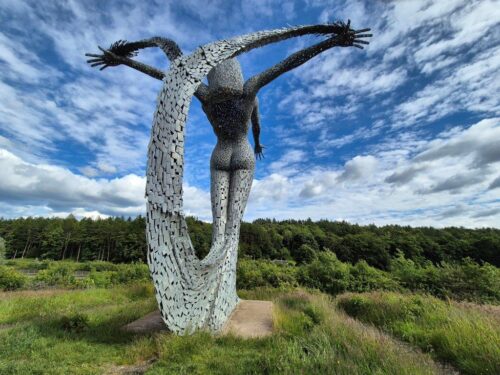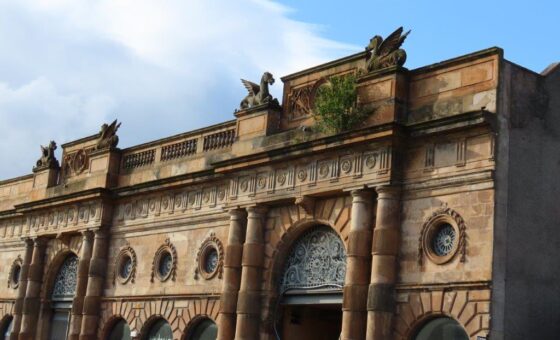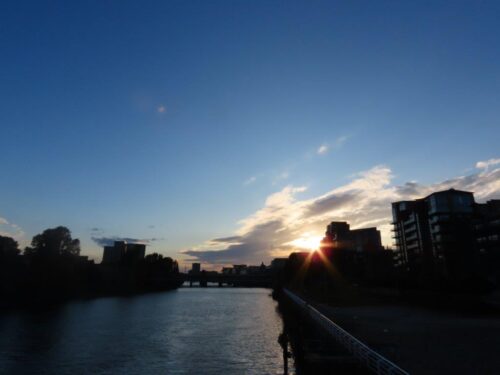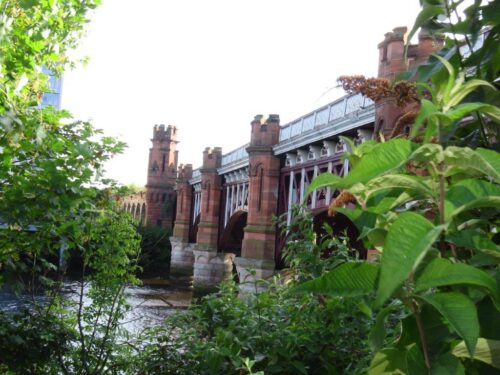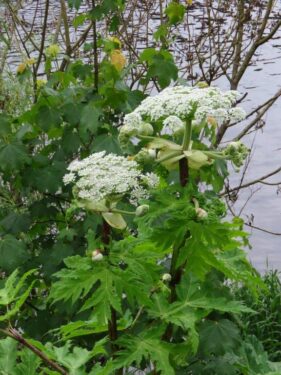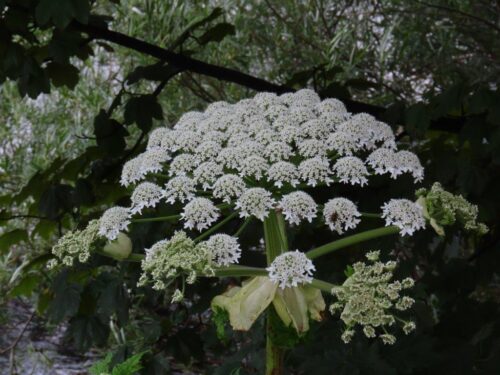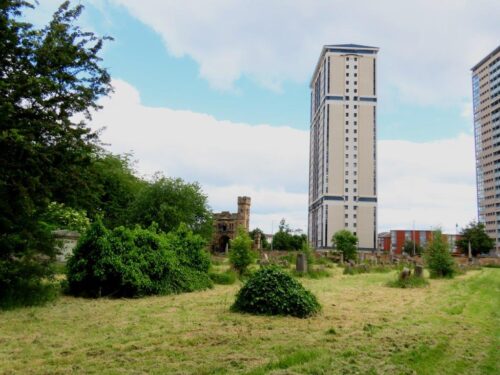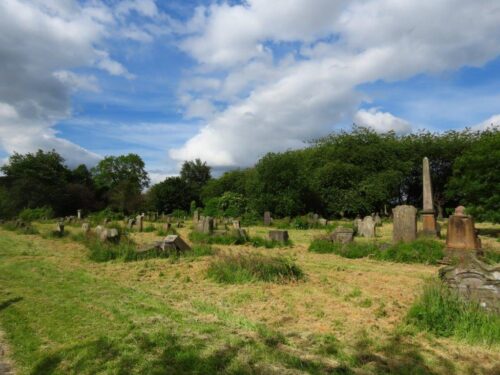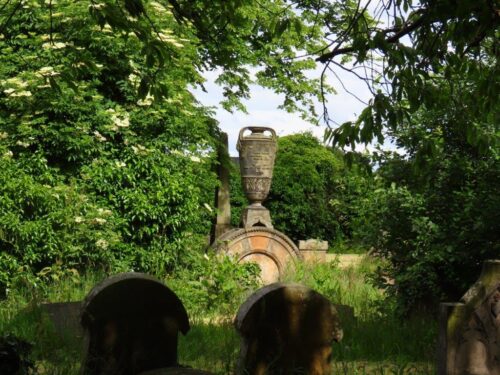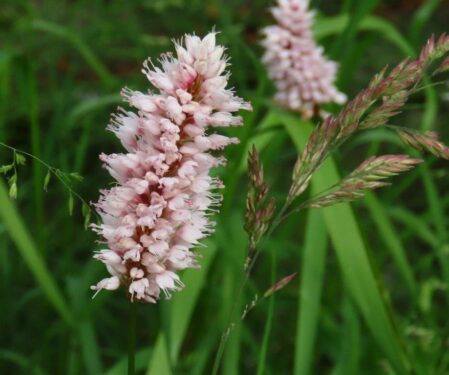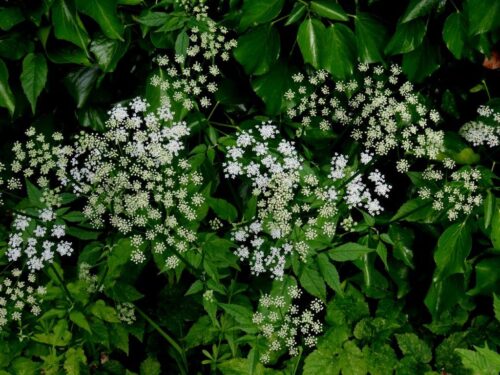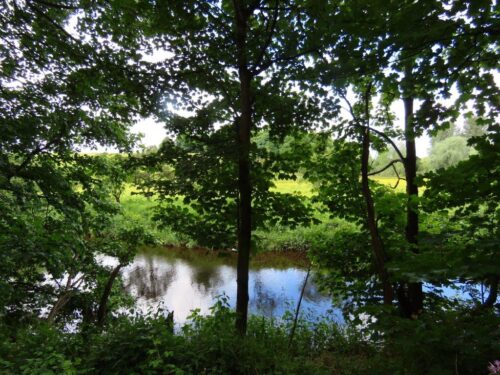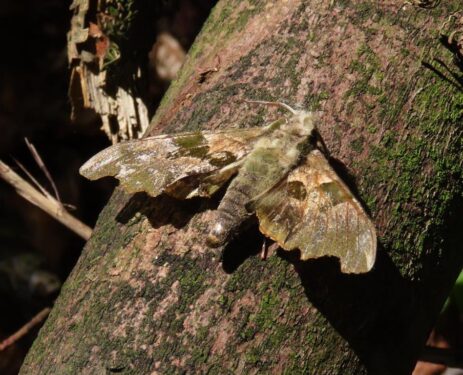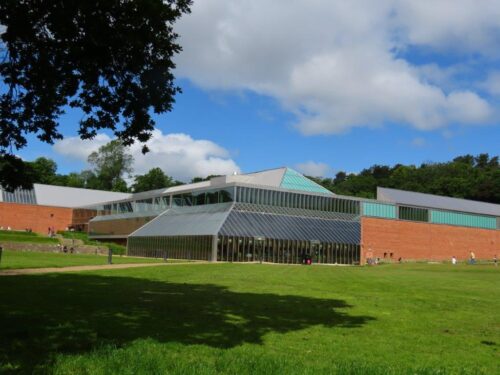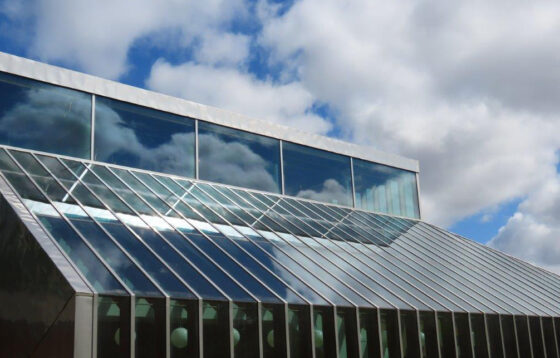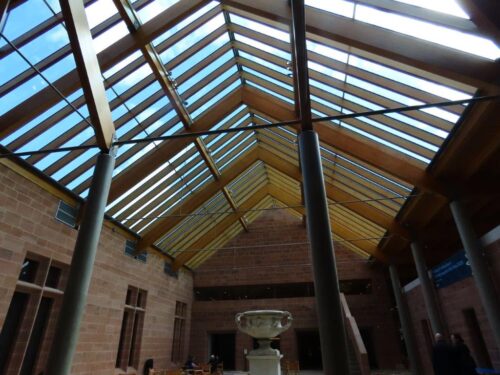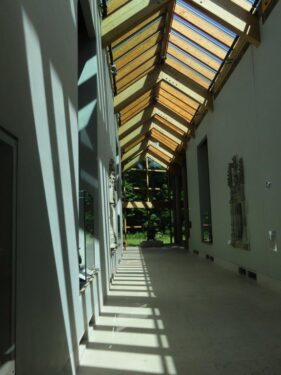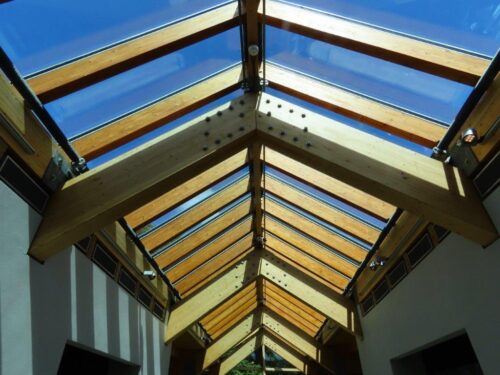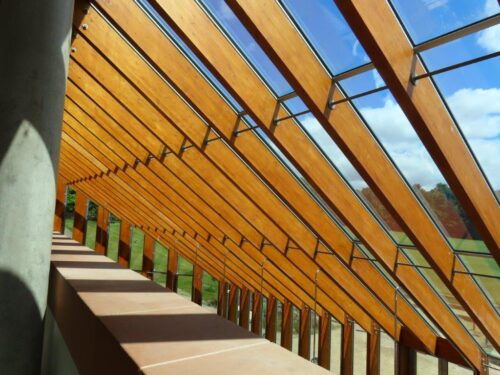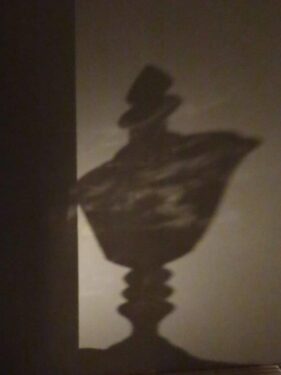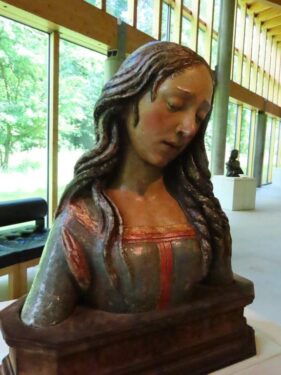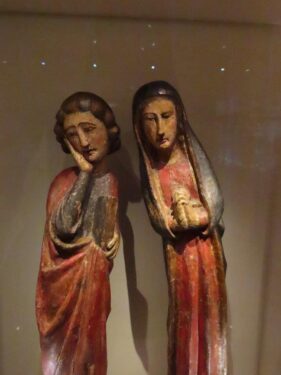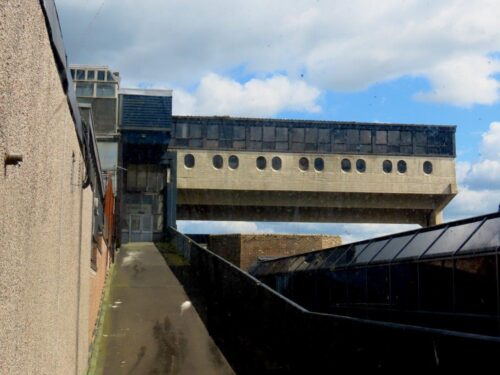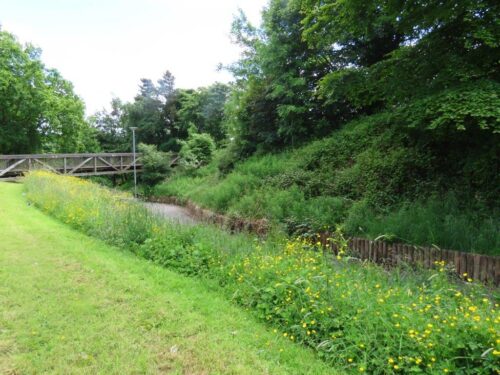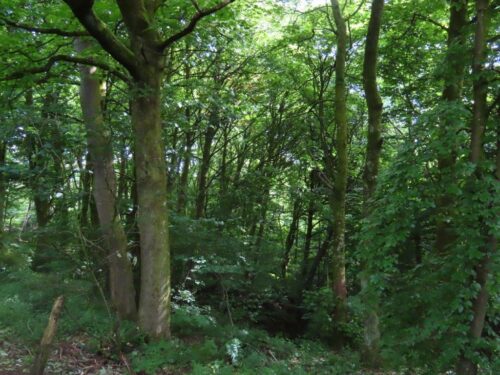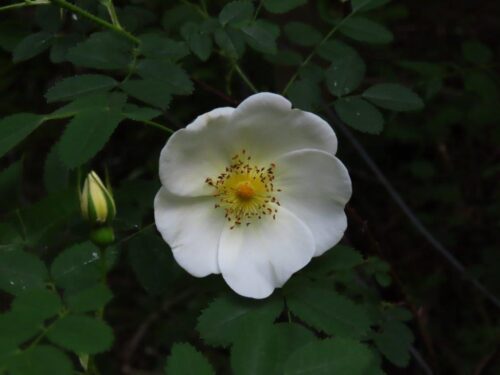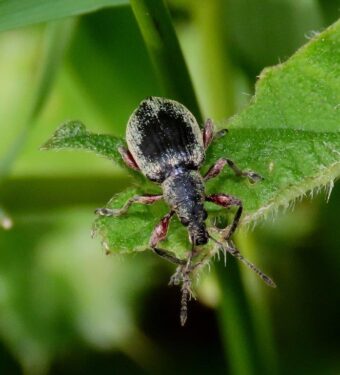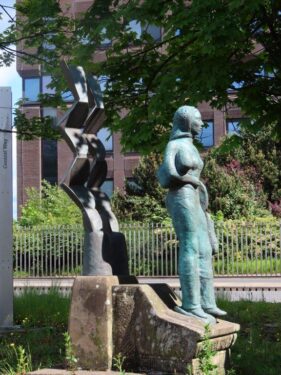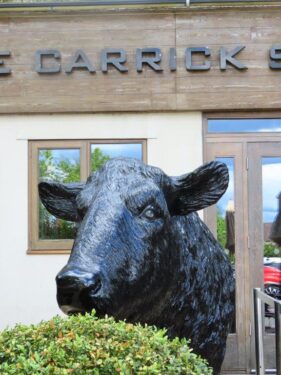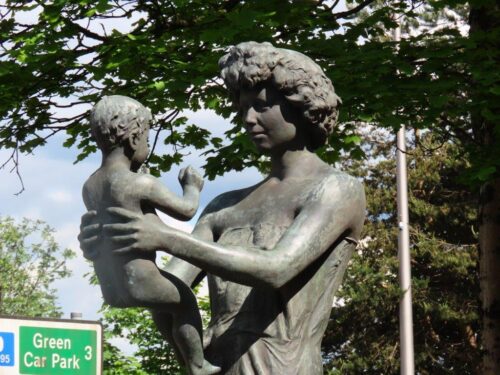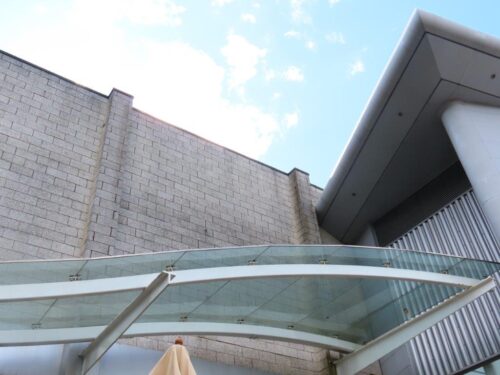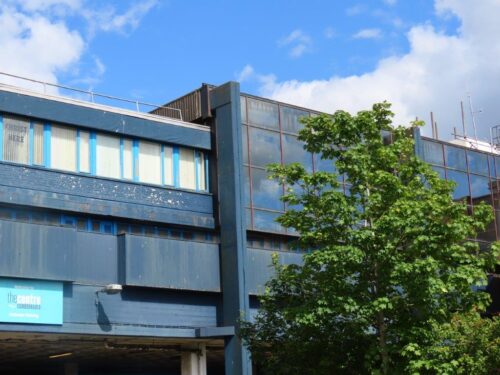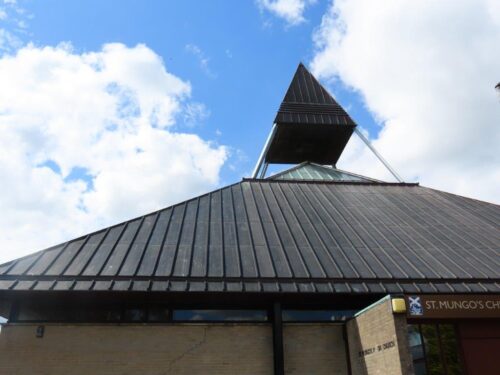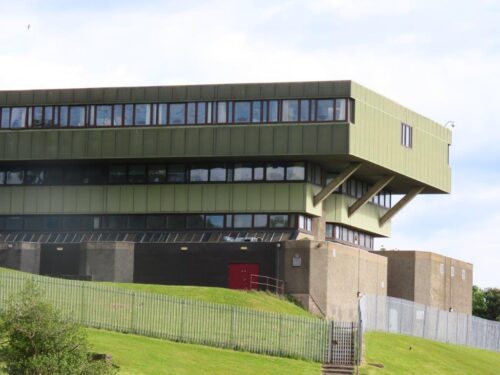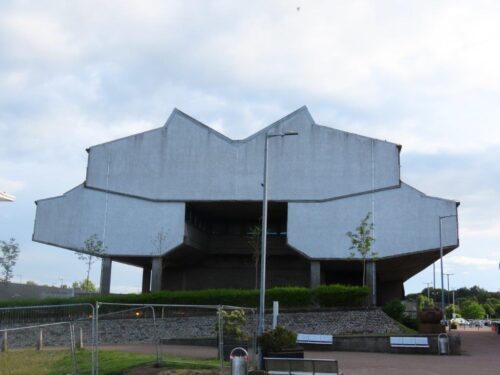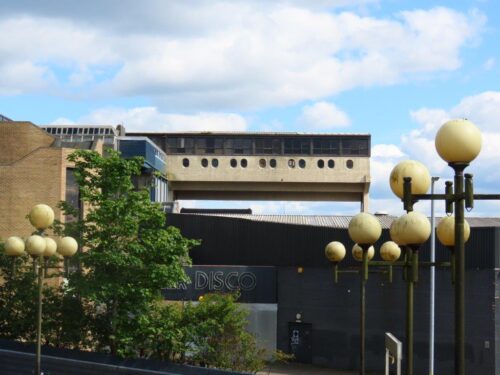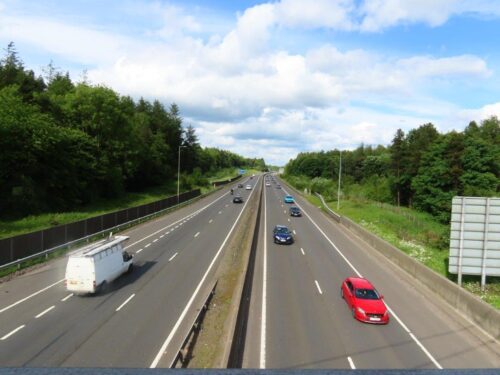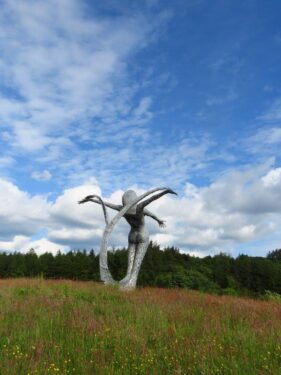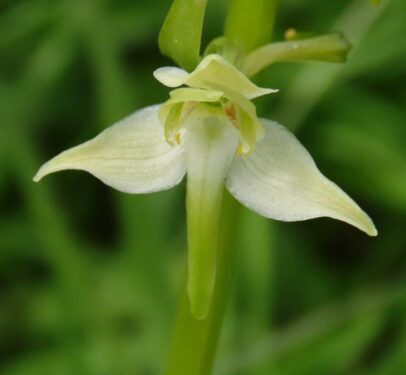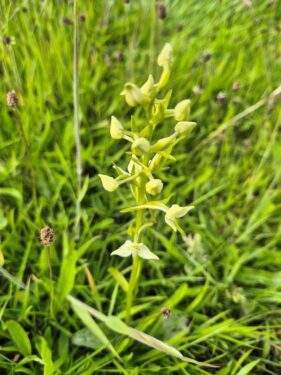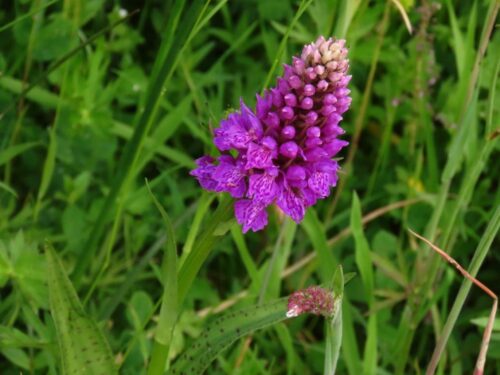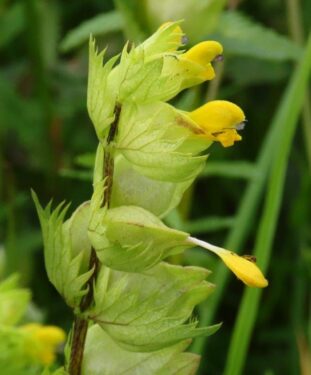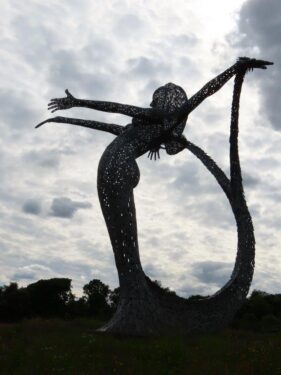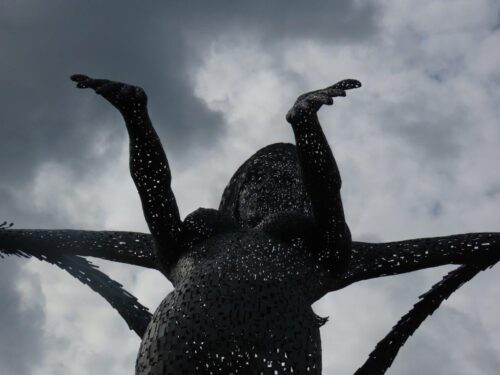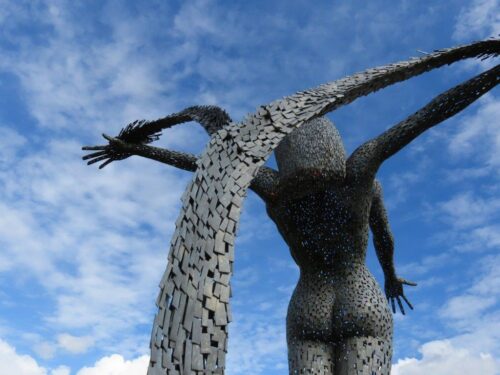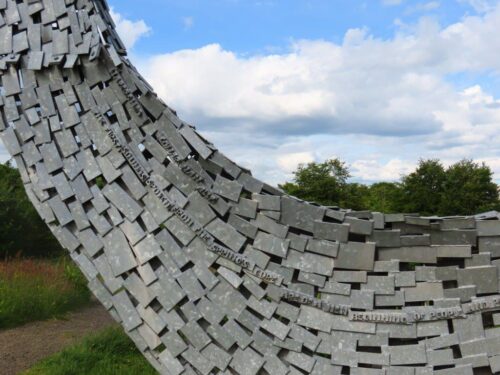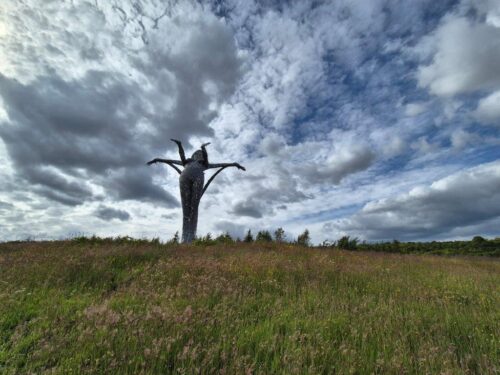And so to Glasgow, midway in Clyde terms between the turbulent upper reaches at New Lanark and the stately tidal mouth around Dunoon and Gourock. Glasgow is one of our favourite cities, possibly the favourite one of all, the result of wonderful experiences there over the past decade. Some of the best times of course have been based around the pubs, especially the Scotia and the Clutha Bars. Both of which were on our walk from the station to our hotel in the Gorbals, on opposite sides of the street … well, it would have been rude not to have checked them out before checking in! The Clutha Bar was especially inviting, with a pizza and a pint offer to complement earlier gastronomic experiences, and live (loud) music to fill the sound of silence after living with the rushing Clyde for the last couple of days.
So it was early evening before we unloaded at the hotel, and headed out for a walk through familiar streets, by bridges and along the river. Pity the wind was so strong and out of the north – absolutely not a summertime experience, even for Scotland. But a Goosander on the river, stately stands of Giant Hogweed on the riverbank and singing Willow Warblers from seemingly every patch of railway scrub gave us our daily nature fix.
The Southern Necropolis cemetery has also done this for us in the past, so after breakfast at the wonderful G5 deli (again one of our regulars and favourites, conveniently round the corner from the Premier Inn) we headed there again. Sadly much of the grass had recently been mown, and the air was simply too cold for insect activity, but it remains a tranquil green refuge.
Our long-awaited first visit to the Burrell Collection, set in the Pollok Country Park played a big part in our decision to return. The park itself contains some lovely grassland and woodland (and provided us with a rather battered Lime Hawk-moth) while the collection is housed in a simply wonderful, recently upgraded, modern architectural marvel.
Light from every angle, shadows as important as the art itself, and the luxury of space make this one of the best museum/galleries we have been to, complemented by interesting exhibits (not always the case, we have found) – and it is free!!
A final flourish for our holiday was a jaunt out to Cumbernauld. We like concrete brutalism, we like planned new towns such as Harlow, so a visit was a must. The train from Queen Street started in an interesting fashion, with hordes of glittering Swifties waiting to head out to Murrayfield, such that the concrete of Cumbernauld represented reassuring familiarity.
Planned and built from the 1950s, like Harlow the town features extensive traffic-free walking routes, some forming impressive green corridors.
From the station to the Centre we had to cross not a single road, until arriving at the heart, now given over firmly to the domain of the car. By now the hottest day of our holiday, after a restorative pint among the public sculpture (reminiscent again of Harlow) we strolled around and through the 1950s dream that hasn’t really been served well by history.
Bits have been knocked down, other bits added piecemeal, but its brutalist heart is just still beating – or is that the sound of raindrops dripping into the shopping mall, a leaking canyon of empty units and charity shops?
The Centre is deemed worthy of listing, but the authorities have decided not to, given that plans for comprehensive redevelopment are apparently well advanced. Necessary perhaps, but replacing utopian individualism with modern retail conformity hardly seems like a great step forward.
All that was left to do was much more uplifting: after a good trek along greenways, again largely traffic free, and over the raging motorway, we found ourselves at the Arria statue, by Andy Scott, he of the Kelpies renown.
Imposing yet invisible until almost upon her, she was remarkable, standing in a lovely meadow with Yellow-rattle, Greater Butterfly- and Northern Marsh-orchids. and with a stillness that seems to subdue even the roar of the motorway, helped by the tinkles of yet more Willow Warblers.
Why here? Well, Cumbernauld stands on the watershed of Scotland (its name may be derived from a translation of ‘meeting of the waters’). So this really complements the rest of our holiday, representing the point at which rainwater drainage runs either east into the Forth or west to the Clyde.
And watershed in a metaphorical context, an east-west political boundary, the furthest reach of the Roman Empire. marked by the nearby Antonine Wall: Arria is named after the mother of Emperor Antonius. And to draw the watershed imagery together, the statue is inscribed with the words of the poem ‘Watershed’ by Scottish poet Jim Carruth.
It is a pity that time, and the very late sunset, didn’t allow us to see Arria in her internally illuminated glory. But back in Cumbernauld centre, the Beefeater gave us sustenance, and the warmest welcome (which naturally translated into the largest tip) of our entire holiday.
On our final morning I woke to the song of yet another Willow Warbler, this in the hotel car park, a particularly poignant sound for those of us from a part of the country from which they have been stripped as a breeding bird in only the past decade by climate change. A song of our recent past that remains in my brain. Without a memory there can be no mourning, so sing, little bird, of the things we have lost but could be ours again if only we have the will.
For other blogs from this trip, see:
Tales of the Bonny Clyde: 1 – Dunoon & Benmore | Chris Gibson Wildlife
Tales of the Bonny Clyde: 2 – New Lanark | Chris Gibson Wildlife
